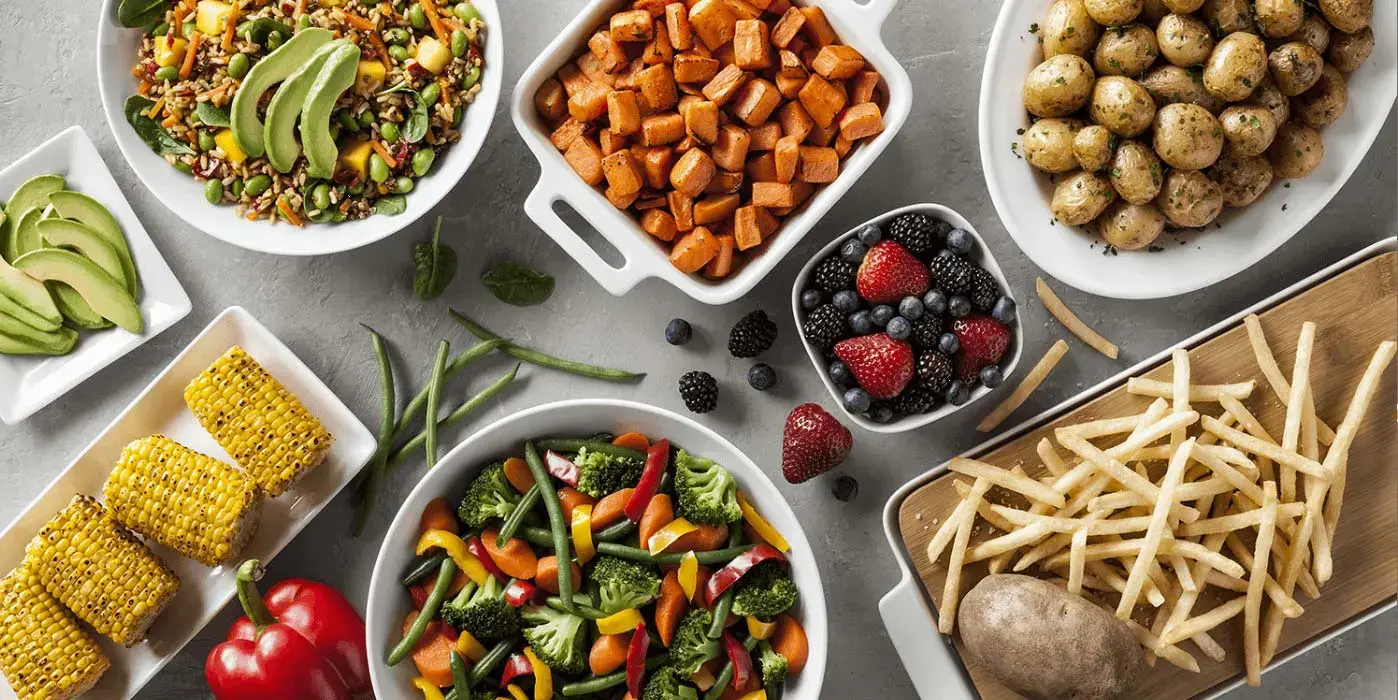K-12
How K-12 Operators Can Celebrate Lunar New Year
1/31/2025

While January 1 may be behind us, there’s an opportunity to engage students with another New Year’s celebration — Lunar New Year. Celebrated throughout many Asian countries, including China, Vietnam, and Korea, the 2025 Lunar New Year begins on January 29. And unlike Western New Year’s celebrations that only last for a single day, Lunar New Year’s celebrations last until the full moon arrives fifteen days later.1
So how can you celebrate this traditional holiday with foods and festivities that celebrate diverse cultures and give students memorable dining experiences? Dive into the history and traditional ingredients associated with Lunar New Year and take inspiration from a range of recipes and celebrations.
Lunar New Year: What you need to know
Every year in the Lunar calendar is represented by a Zodiac animal you may already be familiar with, like the rat, tiger, rabbit, and pig. 2024 was represented by the dragon, while 2025 ushers in the year of the snake, and next year will welcome the year of the horse. Snakes represent a range of attributes in the calendar, including wisdom and knowledge (making this year particularly relevant to students and schools), intuition, and creativity.1
While the snake is represented throughout each country celebrating Lunar New Year, each culture marks the occasion differently. In China, a weeklong vacation across the country is celebrated with travel and ends with the Lantern Festival featuring parades, dances, and fireworks, while in Vietnam they celebrate by decorating homes with flowers and kumquat trees. Cleaning the house to prepare for the new year and giving money are common traditions across many cultures.1
Why food matters during Lunar New Year
Across every culture, food is a key element in Lunar New Year celebrations, with many ingredients and dishes having symbolic meanings that represent luck, prosperity, unity, health, and other hopes for the year ahead. Dumplings (symbolizing wealth), noodles (longevity), and vibrant vegetables (abundances) are key in many countries.1
In China, fish typically ends the New Year’s Eve meal because the word for “fish” also means “abundance,” while foods made with glutinous rice (like glutinous rice ball soup) are common because they represent togetherness. Moon-shaped New Year’s rice cakes and dumplings, or jiaozi, are also common.1
Fruit platters are shared in Vietnam, along with filled rice cakes wrapped in bamboo leaves called bánh chưng. Mứt tết, or sweet treats made from dried fruits and seeds, are given to guests. Across Korea, a sliced rice cake soup called tteokguk is prepared, featuring white rice cakes in a clear broth symbolizing a clean mind and body to start the year.1
Celebrating Lunar New Year at your school
With food being such an important element in Lunar New Year celebrations, there is an opportunity for K-12 operators to acknowledge the cultural significance of this time. This year, New York public schools will observe Lunar New Year as a holiday for the first time, joining many other districts across the country in recognizing the importance of the holiday for many students. In fact, 2 billion people celebrate Lunar New Year globally.2
Sara Elia, a New York teacher who teaches Chinese enrichment classes to elementary students, notes that food is “arguably the most important part of the holiday along with being with family” and suggests printing photos of the many dishes eaten during Lunar New Year, labeling the ingredients and flavors and opening students up to viewing and discussing foods from other cultures respectfully.2
Lunar New Year is a festive time and a great opportunity to create a fun atmosphere in your cafeteria. Red and gold banners and paper lanterns are traditional Chinese decorations, for instance, and can be an attention-getting way to transform your dining venues for Lunar New Year and get students excited and engaged. Follow it up with plenty of learning opportunities like fun facts about Lunar New Year, information on what various foods symbolize, the background and history of the celebration, and the Zodiac animals and snake.
This can also be a great opportunity to give Asian-American students the foods and flavors that are central to Lunar New Year celebrations, while also giving all students an opportunity to try foods that may be new and exciting to them. Consider these recipes to get started:
Give students a taste of Thai street food with this Street Food Style Thai Fried Rice featuring Simplot Good Grains™ Brown Rice and plenty of veggies.
Lunar New Year is celebrated with a midnight meal in the Philippines. For a taste of Filipino food, serve some Pork Lumpia made with Simplot RoastWorks® RTE Flame-Roasted Unseasoned Peppers & Onions Blend, or Pancit Bihon, a stir fry featuring chicken and Simplot Simple Goodness™ Sugar Snap Pea Stir Fry Blend.
Korean Japchae is a classic dish featuring noodles and veggies like Simplot Simple Goodness™ Parisian Carrots and Chopped Spinach, on-trend Korean Hot Dogs can get students excited when made with Simplot Freezerfrige® Shredded Hash Browns (filled with either hot dogs or mozzarella sticks), or give students an all-in-one option inspired by this Korean Fried Chicken Wings Brunch Picnic Kit.
While Japan celebrates the New Year on January 1, it features many of the same traditions as Lunar New Year and also features the snake as the symbol for the year ahead. Teach students about these differences and give them a taste of Japanese cuisine with options like a flavorful and veggie-packed Riced Cauliflower Okonomiyaki Pancake featuring Simplot Simple Goodness™ Riced Cauliflower or a warm and filling bowl of Japanese Ramen with Quinoa featuring Simplot Good Grains™ Thai Style Red Quinoa & Vegetable Blend.
Lunar New Year celebrations can also be tied into the breakfast menu with options like these Breakfast Bao Buns featuring bold and colorful ingredients like Simplot® Harvest Fresh® Dill Pickle Flavored Avocado Spread and RoastWorks® Roasted Sweet Potatoes.
As they say in Mandarin, “Xīnnián kuàilè,” or “Happy New Year.”1



